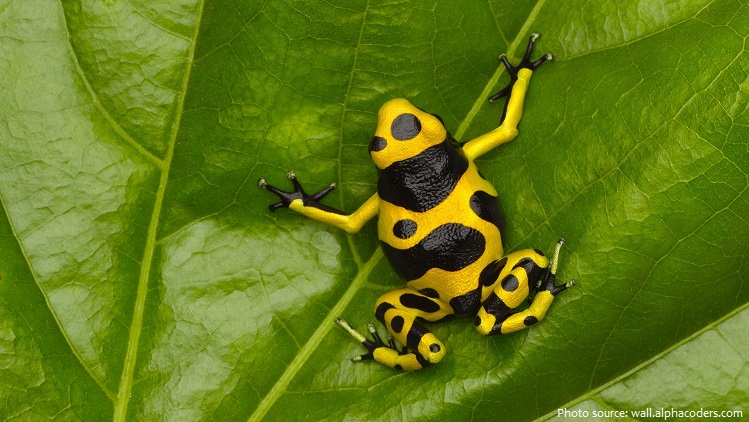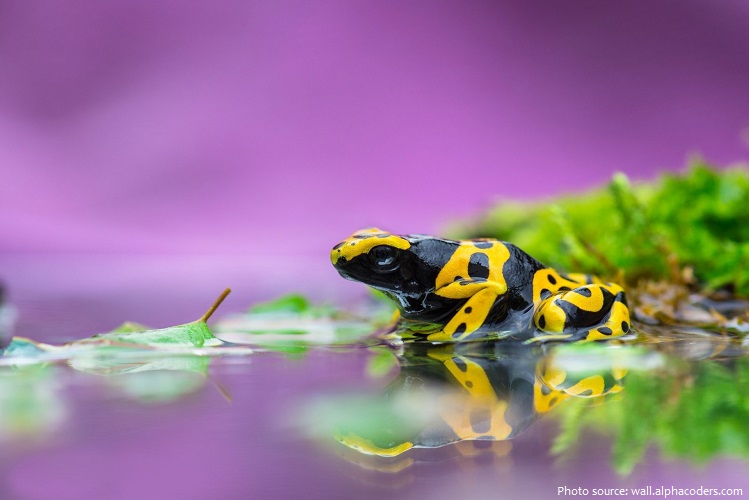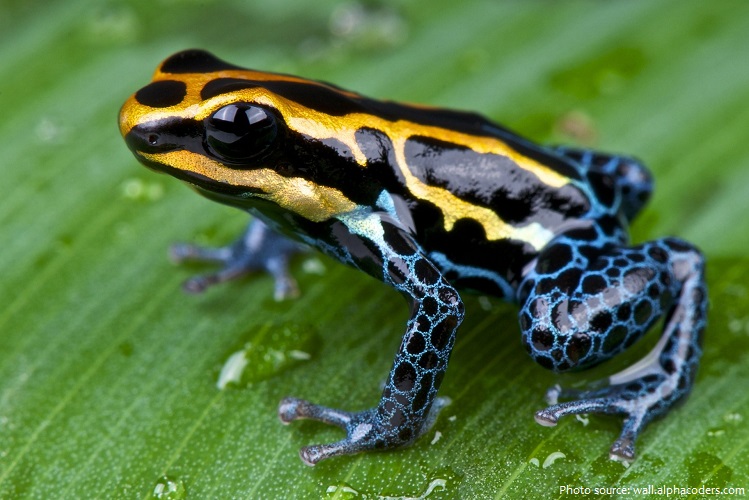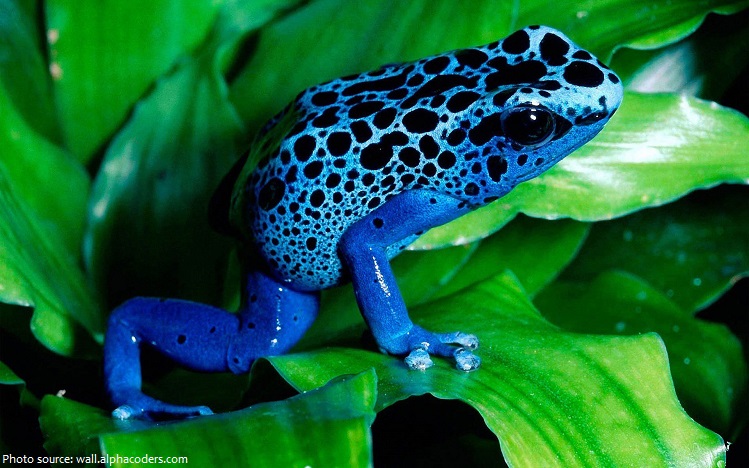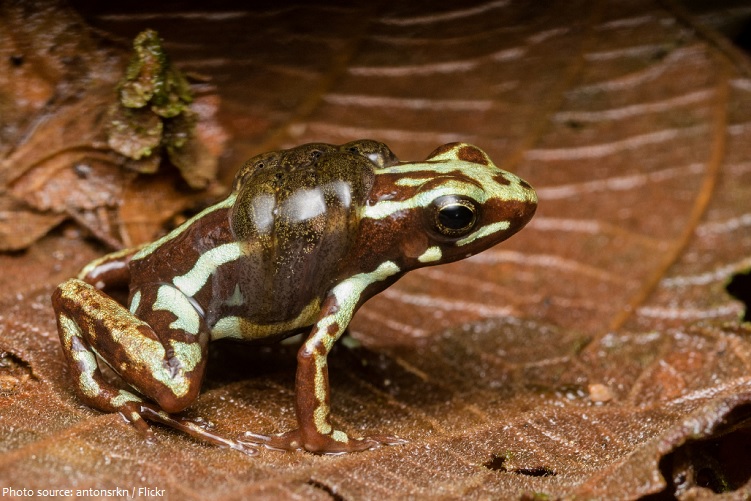Poison frog also called poison dart frog, dart-poison frog, or poison arrow frog is the common name of a group of frogs in the family Dendrobatidae.
There are about 180 species of poison frogs.
They are native to Central and South America.
These frogs are generally found in tropical rainforests, including in Bolivia, Costa Rica, Brazil, Colombia, Ecuador, Venezuela, Suriname, French Guiana, Peru, Panama, Guyana, Nicaragua, and Hawaii (introduced).
Natural habitats include subtropical and tropical, moist, lowland forests, subtropical or tropical high-altitude shrubland, subtropical or tropical, moist, montanes and rivers, freshwater marshes, intermittent freshwater marshes, lakes and swamps.
While scientific study on the lifespan of poison dart frogs is scant, retagging frequencies indicate it can range from 1 to 3 years in the wild. However, these frogs typically live for much longer than that in captivity, having been reported to live as long as 25 years.
Most species of poison dart frogs are small, sometimes less than 1.5 centimeters (0.6 inches) in adult length, although a few grow up to 6 centimeters (2.4 inches) in length. They weigh about 30 grams (1 ounce) on average.
The coloration of poison frogs commonly includes reds, oranges, yellows, and even bright blues and greens on a black or dark background.
Not all dendrobatids are so poisonous or brightly colored; some are patterned with shades of brown and well camouflaged, and their skin secretions are generally nontoxic and nonirritating.
Almost all poison frog species are diurnal. Most are terrestrial; some are arboreal.
Poison dart frogs are carnivorous animals that survive on a diet purely made up of meat. Poison dart frogs shoot out their long, sticky tongues to catch flies, ants, insects, spiders and termites.
Poison dart frogs are an example of an aposematic organism. Their bright coloration advertises unpalatability to potential predators.
While most species are considered toxic but not deadly, they are distasteful to a predator and can even be fatal. The poison can cause serious swelling, nausea, and muscular paralysis. If a predator survives the mistake of trying to eat one, it will remember tasting such a frog and will not try to eat anything similar in the future.
The golden poison frog is considered to be the most poisonous animal in the world, producing enough nerve toxin at once to kill 10 humans.
The origin and production of the toxic skin secretions remains uncertain, but at least in some dendrobatids it appears to be derived from their consumption of beetles, their primary prey. When kept in captivity and fed a diet devoid of beetles, the skin secretions of poison frogs lack the highly toxic alkaloids.
These frogs are very social and often stay in pairs or small groups. Males wrestle over territories, females tussle over the best egg-laying sites, and courting pairs nudge and caress one another with their chins and forearms.
Mating usually occurs during the rainy season. Female poison frogs lay small clutches of eggs, from 1 to 30 on average. Many species of poison dart frogs are dedicated parents. The hatchlings, called tadpoles, wriggle out of their gelatin cases onto the father or mother’s back [photo below]. The parents carry their tadpoles to a body of water (such as a stream, a pond, or a tree hole). There, the tadpoles slide off the back of the parent and into the water to complete their development.
The young poison frogs do not look like their parents. As they develop, they change in body shape, diet, and lifestyle, a process all frogs go through called metamorphosis.
Poison frogs are often called poison dart frogs because the Choco people of western Colombia use the poison of one species, the golden poison frog, to coat the tips of the blow darts they use for hunting.
The frogs’ Latin family name, Dendrobatidae, means “one who walks in the trees.”
In addition to practical use for Native Americans to capture game, these frogs contribute to humans a certain intrinsic beauty in their shape and coloration, as well as in the way they call for their mates and take care of their young. The poison dart frogs are a good example of how even the smallest, most toxic, most remote, and difficult to obtain organism can bring joy to humanity. These frogs have become so famous for their combination of vivid coloration and highly toxic poisonous skin that they are in demand as pets.
Poison frogs can be confused with mantellas, which are also small and brightly colored but are less poisonous and are native to Madagascar.
